
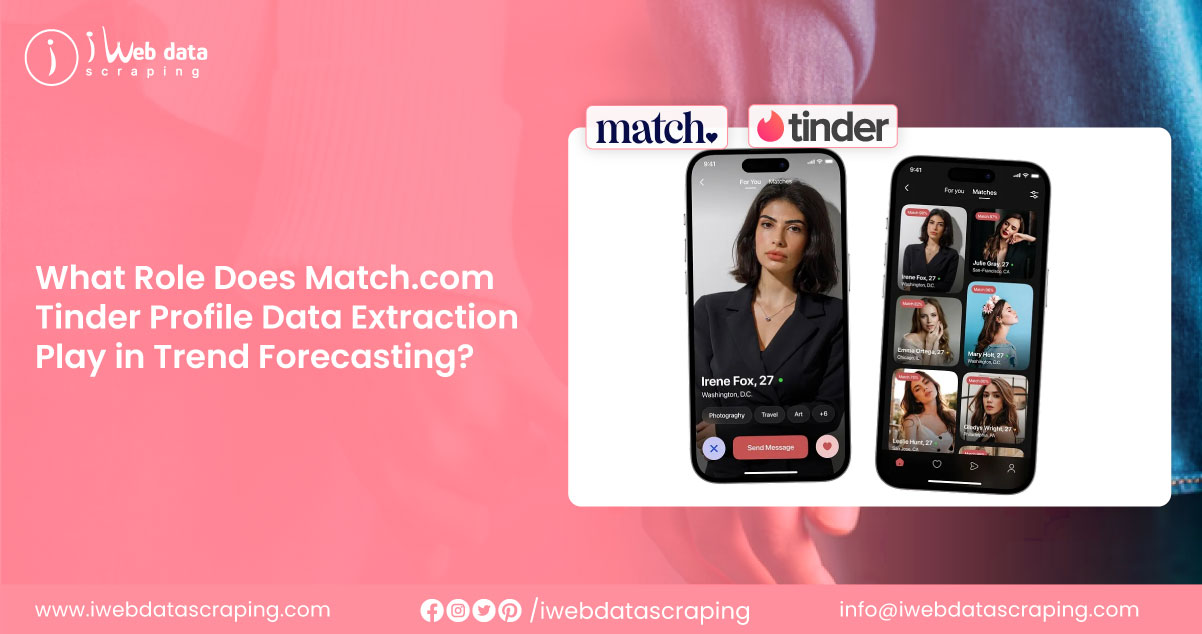
In today's digitally connected world, dating apps like Match.com and Tinder have revolutionized how people connect, communicate, and build relationships. With millions of active users swiping daily, these platforms produce a wealth of data reflecting personal preferences, user behavior, and evolving social trends. Match.com Tinder profile data extraction gives researchers, marketers, and analysts critical insights into how individuals engage with modern matchmaking technologies. Tools like the Match.com Tinder match data scraping API can collect and analyze data to uncover behavioral patterns, engagement metrics, and demographic trends. This information holds immense value for brands aiming to tailor their campaigns, developers enhancing user experience, and social scientists studying digital interactions. Tinder profile data collection services enable systematic and ethical data gathering, opening the door to smarter decision-making and trend forecasting. As dating apps grow, leveraging this data becomes essential in understanding today's social and marketing landscapes.
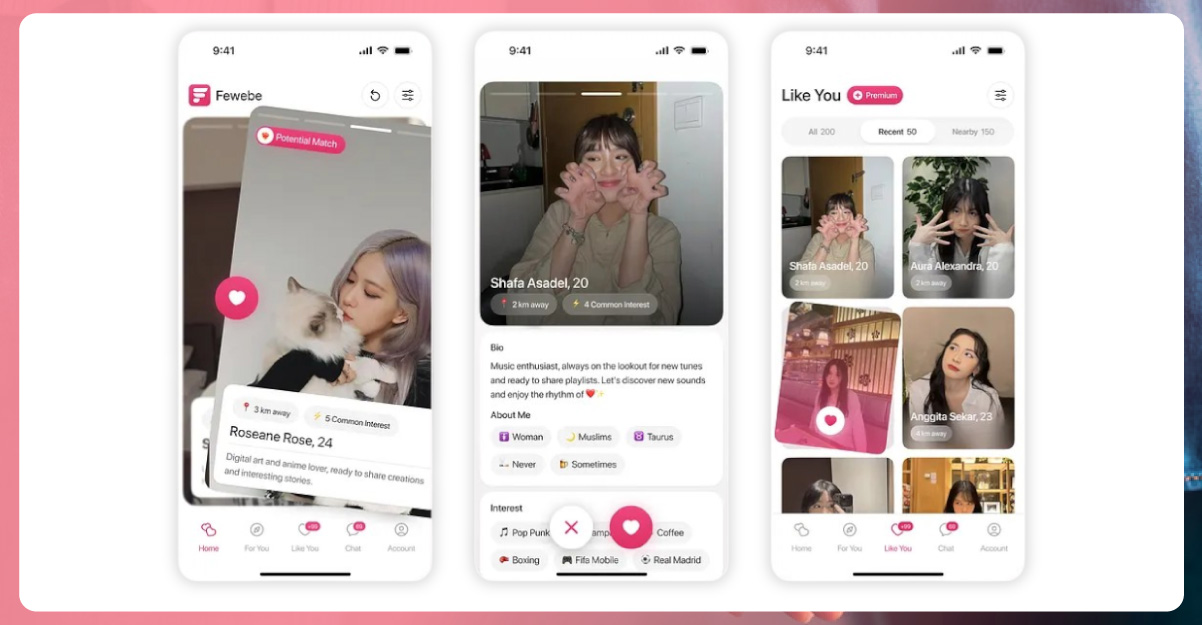
Profile data extraction involves collecting and organizing information from user profiles on platforms like Match.com and Tinder. These apps allow users to create profiles that include details such as bios, photos, interests, age, location, and preferences. Match.com and Tinder dating app scraping enables systematic access to this publicly shared information, which can be valuable for various analytical purposes. Using tools like a Match.com profile info scraper, businesses, researchers, and developers can analyze patterns and gain insights into user demographics, behaviors, and emerging trends.
The data extracted from these profiles is typically aggregated and anonymized for analysis, ensuring privacy while offering a comprehensive view of user activity. For example, a researcher might use Tinder app data scraping to identify popular hobbies, average age distributions, or common keywords in bios across different cities. This public data, shared voluntarily by users, is a powerful lens into evolving social behavior.
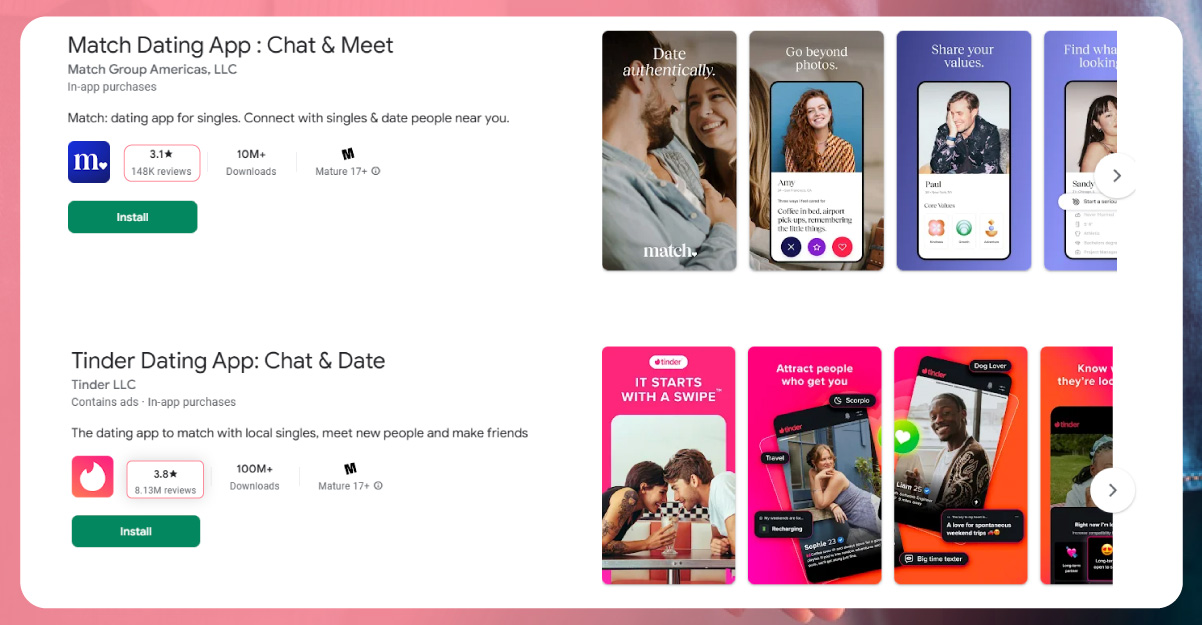
Match.com and Tinder are two of the most popular dating apps globally, each with distinct features that make their profile data particularly valuable. Tinder boasts a massive user base and a swipe-based interface emphasizing quick decisions, resulting in a high volume of interactions and diverse user profiles. On the other hand, Match.com differentiates itself with its women-first approach, where women initiate conversations, and its broader focus on networking and friendships alongside dating. These unique features shape the type of data available on each platform, making them ideal candidates for extraction and analysis.
The sheer scale of these apps—millions of active users across diverse demographics—creates a treasure trove of information. From urban professionals to rural singles, the data reflects a cross-section of society, capturing preferences, cultural trends, and regional differences. By extracting profile data, analysts can uncover patterns that reveal how people present themselves, what they value in potential matches, and how these factors vary across geographies or age groups.
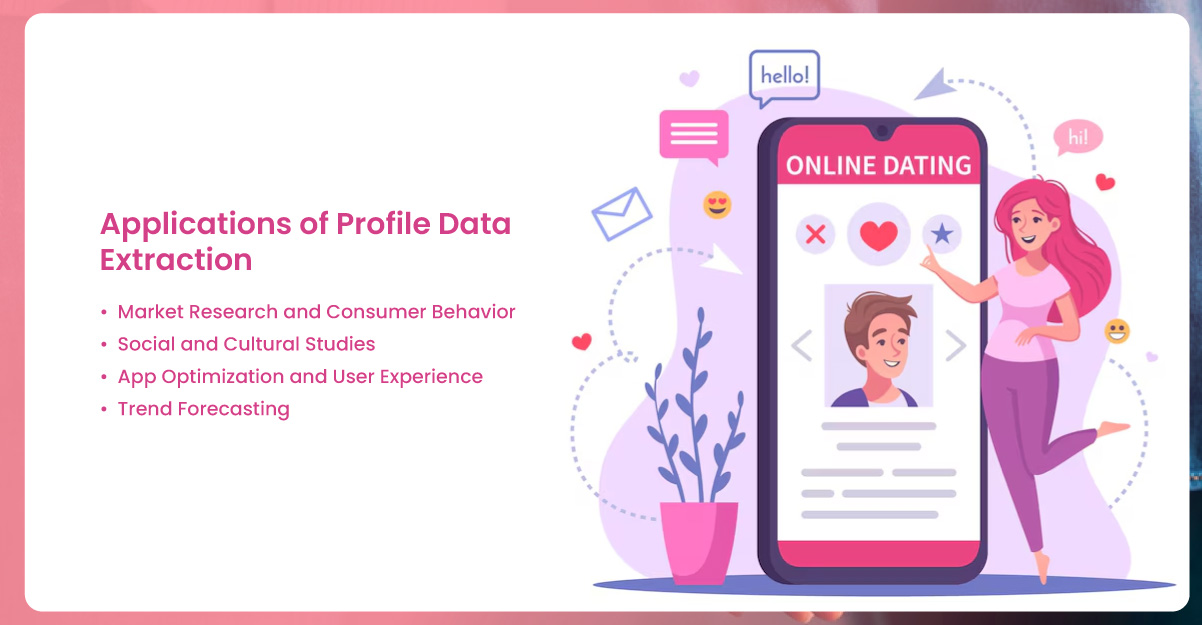

The true power of profile data extraction lies in aggregation. Individual profiles offer snapshots, but when thousands or millions of profiles are analyzed together, patterns emerge that tell a larger story. For example, a study of Tinder profiles in a significant city might reveal that 30% of users mention travel as a key interest, suggesting a cultural emphasis on adventure and exploration. Similarly, Bumble's data might show a growing number of users identifying as "plant parents," reflecting a trend toward indoor gardening.
These aggregated insights are valuable because they transcend individual anecdotes and offer statistically significant findings. Businesses and researchers can use this data to make informed decisions, whether launching a new product, designing a study, or optimizing a platform. The scale of dating app data ensures that these insights are robust and representative of broader populations.
Unlock powerful insights from dating app profiles—leverage data to drive smarter decisions today.
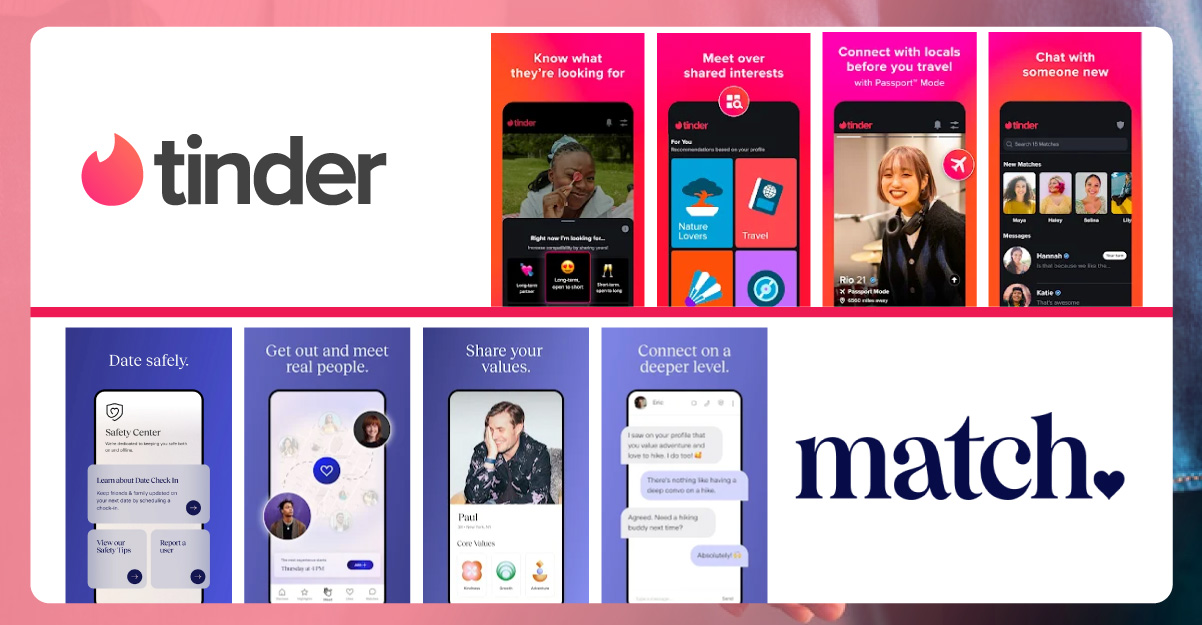
While both apps provide rich datasets, their distinct designs yield different types of information. Tinder's swipe-heavy model generates high-frequency data on user preferences, as each swipe reflects a quick judgment based on limited profile information. This can reveal what catches attention instantly—perhaps vibrant photos or clever one-liners. With its focus on detailed profiles and user-initiated conversations, Match.com offers more profound insights into how people craft their self-presentation when they know they'll need to take the first step. The diversity of user intentions also adds value. Bumble's inclusion of modes for friendship and professional networking means its data captures a broader range of social interactions than Tinder's primarily romantic focus. This variety makes Bumble's dataset particularly useful for studying non-romantic social trends, such as how people pitch themselves in professional contexts.
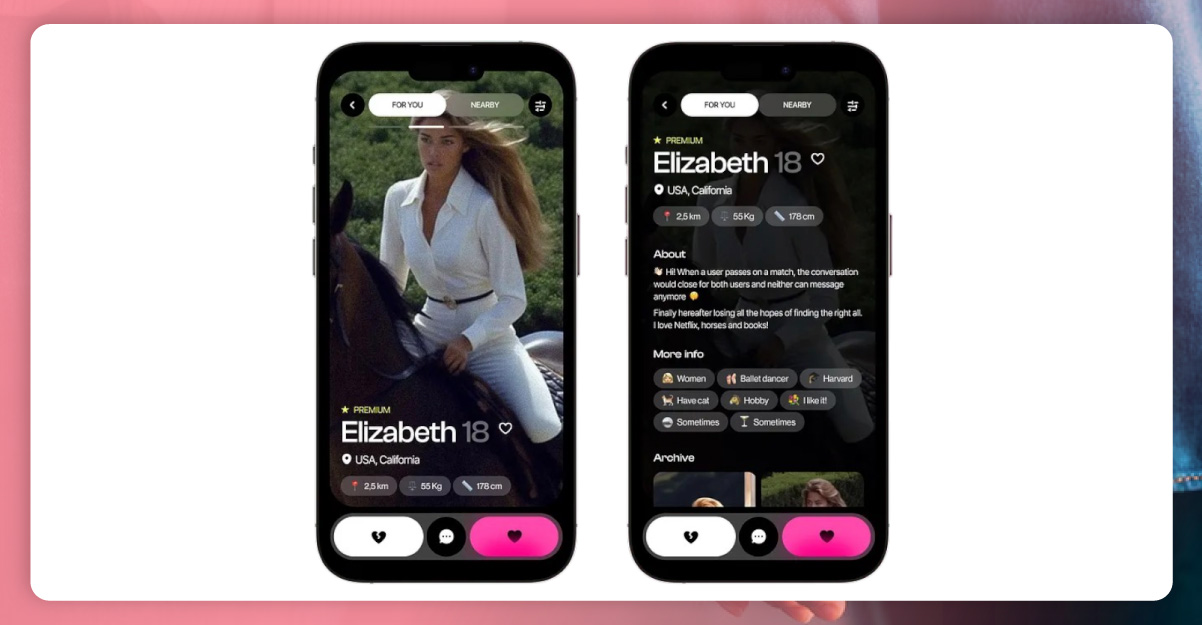
Match.com App Data Scraping and Tinder profile data extraction applications are already visible in various industries. Marketing firms have used dating app data to identify target audiences for campaigns. At the same time, researchers have published studies on topics like gender norms and online self-presentation based on profile analyses. App developers, meanwhile, continuously refine their platforms using insights from user data, creating better experiences that keep users engaged.
For example, a fitness brand might analyze Match.com profiles to discover that users frequently mention gym routines, prompting a campaign for workout gear tailored to young singles. A sociologist might use Tinder data to study how humor varies across cultures, informing broader research on communication styles. These real-world impacts highlight the versatility of profile data as a tool for understanding and engaging with modern audiences.
As dating apps evolve, the potential for profile data extraction will only grow. New features, such as video profiles or AI-driven prompts, will add complexity to the data, offering even richer insights. For businesses, researchers, and app developers, staying attuned to these changes will be key to unlocking the full potential of this data.
Moreover, as user bases expand globally, the data will reflect an even broader spectrum of cultures, preferences, and behaviors. This global perspective will be invaluable for companies seeking to understand international markets or researchers studying cross-cultural trends. The ability to tap into this ever-growing dataset positions Match.com and Tinder as not just dating platforms but also powerful sources of social intelligence.
Match.com and Tinder profile data extraction opens a window into the preferences, behaviors, and trends shaping modern society. From market research to cultural studies, the applications of this data are vast and varied, offering insights that help businesses, researchers, and developers better understand their audiences. By analyzing the aggregated data from millions of profiles, we can uncover patterns that reflect how people connect, what they value, and where society is headed. As these platforms continue to grow, their data will remain a goldmine for those seeking to navigate the complexities of human interaction in the digital age.
Experience top-notch web scraping service and mobile app scraping solutions with iWeb Data Scraping. Our skilled team excels in extracting various data sets, including retail store locations and beyond. Connect with us today to learn how our customized services can address your unique project needs, delivering the highest efficiency and dependability for all your data requirements.